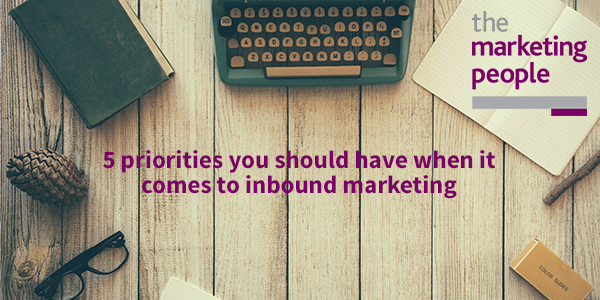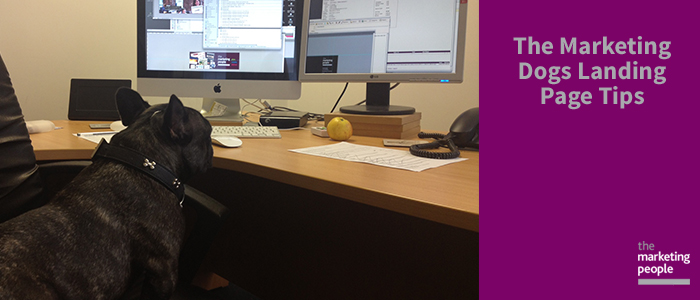

Even if you’ve managed to successfully blog all the way through the year, it can be heard to know what to blog about in this seasonal time. We’ve put together 10 things you could blog about with your Christmas content.
Your best bits
Christmas and New Year is a time we all naturally reflect on our lives and what has happened in the past year. So looking back on your best bits of the year will not only be quite therapeutic for you. But will remind your customers of the good things you have done. The challenges you have overcome. And why they became a customer with you in the first place.
Some good starting points might be what company successes have you celebrated? Has your company grown, or moved offices, or won any awards? Have you had any personal successes in the team such as promotion, marriage or cute newborns? Or has your team really gone the extra mile this year, and took part in charity events, or volunteering projects?
Once you get started, you will probably have a lot more to talk about than you think.
What is coming in the New Year for you
If you are making any changes in the New Year, now is a good time not only to inform your customers. To get them excited about it, and ready to embrace the changes.
Consider if you will be offering new services or products in the New Year. Can customers get money off if they refer to a code given in the blog? This may increase shares of your blog, and visits to the website. Resulting in more organic sales, as well as people taking advantage of the offer in the New Year.
Are you moving premises, or changing your opening hours? Now is a great time to inform your customers to save confusion when it comes to January.
Industry relevant Christmas/New Year preparation
If people are regularly visiting your blog, or find your blog within search results, they are most likely interested in your industry. So posting industry relevant festive content is something your readers may be interested in. And helps to keep your 80:20 ratio of informative content, to advertising, in a time where it is easy to slip into heavy sales.
Not sure what you would write? Well if we look at our blog for example. This very post in fact. It is an informative post, relevant to marketing, that is based around the festive period.
If, for example, you run a HR blog, why not look at how to act appropriately at the office Christmas party. If you run an accountancy blog, why not look at how to get your finances in order for 2016. These are simple ideas, but it can be easy to overlook them when panicking about what to write when you are more deadlines than normal looming.
Seasonal Industry News
Following on from advice in your industry during the festive period, is there any relevant industry news that affects you during this season?
Retail blogs have a lot to work with here, such as looking at best buys for the season or how Black Friday has affected you.
Marketers, we have new Christmas campaign after new Christmas campaign that we can critique. To look at how these could be improved, or how much profit was gained by running a certain campaign.
Security blogs can look to the news of the latest crime statistics. In a period of time where many people have high value items sitting on show in their cars and houses. What are people saying about it? And what can people do to stop themselves being part of the story?
Again, this is looking at keeping your blog content informative, and useful for the reader at a time where most content is focused on selling.
Acts of Goodwill
We touched upon this in an earlier point, but as this is the season of goodwill and charity, it is definitely a subject to talk about.
If your team has been involved in charity work, fundraising or volunteering, then talk about it. What did they do, why were they doing it and how did it go? Not only are you showing the employees who took part that you are proud of what they have achieved. You are also showing your customers that you care about these causes, and it’s not all about just going to work each day.
Are you planning more fundraising next year? Let people know, or ask what charities they would like to see you support, or what events they would like to see. Engage with people now. So when the time comes, your customers can see that you have followed through on your word.
Or if you have not had time. Or are not in a position to fund-raise yourselves, why not look to other examples of goodwill to talk about? Social media is full of examples of this. Of individuals, as well as charities, passing out coats, gloves and scarves to the homeless. Of people starting a pay it forward gesture at a coffee shop, where they pay for the next persons coffee. Or of school children putting together shoebox’s of gifts to be sent to other children across the globe. There are plenty of examples out there of people doing good, so to share and celebrate their achievements is a great thing to do.
Your most popular posts of the year
If you blog regularly, now may be the time to recap on what have been the most popular posts. This is something you will see on our own blog in the near future, as we post twice a week, readers can miss out on the occasional post!
Use analytics tools to find the top read blogs for the year, and then link them all together in one handy post. This gives readers a chance to refresh themselves on content they may have forgotten about. New readers a chance to catch up on what has been going on. And it’s a great exercise for you to see what has been well received by your potential customers. So then you can use that information to build on next year’s posts.
Things you have learned as a business this year
This can be done in two ways, extremely silly or serious reflection. That’s really up to you and your company.
Silly side, you can have learnt that perhaps some of your colleagues shouldn’t be trusted to make a good cuppa. Or that you need to call to check outfits as people have turned up in the same thing. Maybe you have learned that once one person ordered in food, that means the rest of you cave in too and it turns into a full on food session? Just remember to keep it appropriate, and not too personal about your colleagues. This post should definitely be a light hearted one.
If you’re looking for a more reflective post, perhaps you can look at how you managed to conquer your social media fears. Or how it was a great move to get your website updated. Maybe you changed your location, which worked really well. Or you learnt what your customers really love.
Whichever you choose, this is an opportunity to give your readers some insight into you company, what you value, and what sort of people you actually are.
Gift Guide
This will only work with some businesses, so think carefully before using this. B2C businesses have it a little easier here, and can use this as a little promotion for your own products. Talk about your products, why they’re great, and why people have bought them already.
If you don’t necessarily have products that can be sold at this time, maybe you could look at a light hearted version of this post. Collate the worst/most random/most ingenious gifts you have seen around. You could run a “the 10 worst things you could buy your loved one” or perhaps “the 8 gifts that have got us excited for Christmas in the office”. Try and keep it still relevant to your business, make sure it still has a clear purpose and always make sure it’s appropriate.
Your best customers
As well as looking back at what your company has done, and what you have achieved. Now is a great time to look back at the lovely customers you have had, and have supported your business this year. This may work slightly better for B2B companies, than B2C. As you may have worked with a particular client or customer repeatedly over the year.
Talk a little about the work you did together. How it has benefited that company or person. And why you loved working with them.
This is a great post, not only for promoting and saying thank you to your customers. But it’s also great for getting your post seen by new audiences if your customers share your post. Meaning you may gain a few more customers from the post.
Merry Christmas Message
Number 10 in the list is probably the most obvious one. But a really nice one to put up. Wish your readers a Merry Christmas, thank them for their support, and inform them of your business opening hours over the Christmas season.
Work with some lovely graphics to make it this a nice visual post you can share. Then work on some mince pies and hot chocolates because it’s Christmas and you’ve worked hard.
It really is a great time of year on a business blog to add in more humour. To be more personal. To provide more insightful information for your readers. So take advantage of the topic ideas above, and let us know if there is a topic you love to post about at this festive time.
Take a look at the rest of our countdown to the 12 days of Christmas, for more advice, how to’s and examples of marketing during this festive season.










